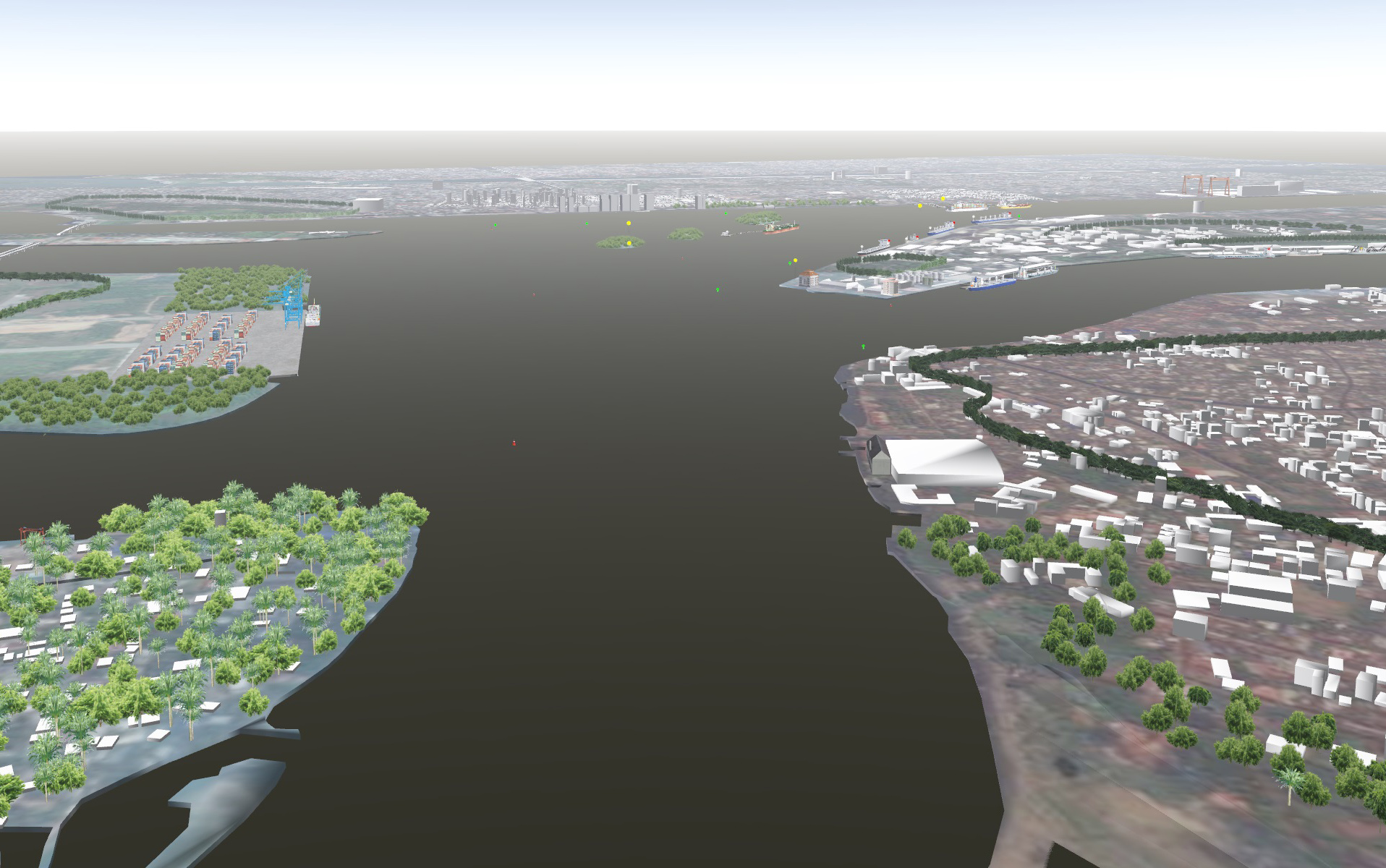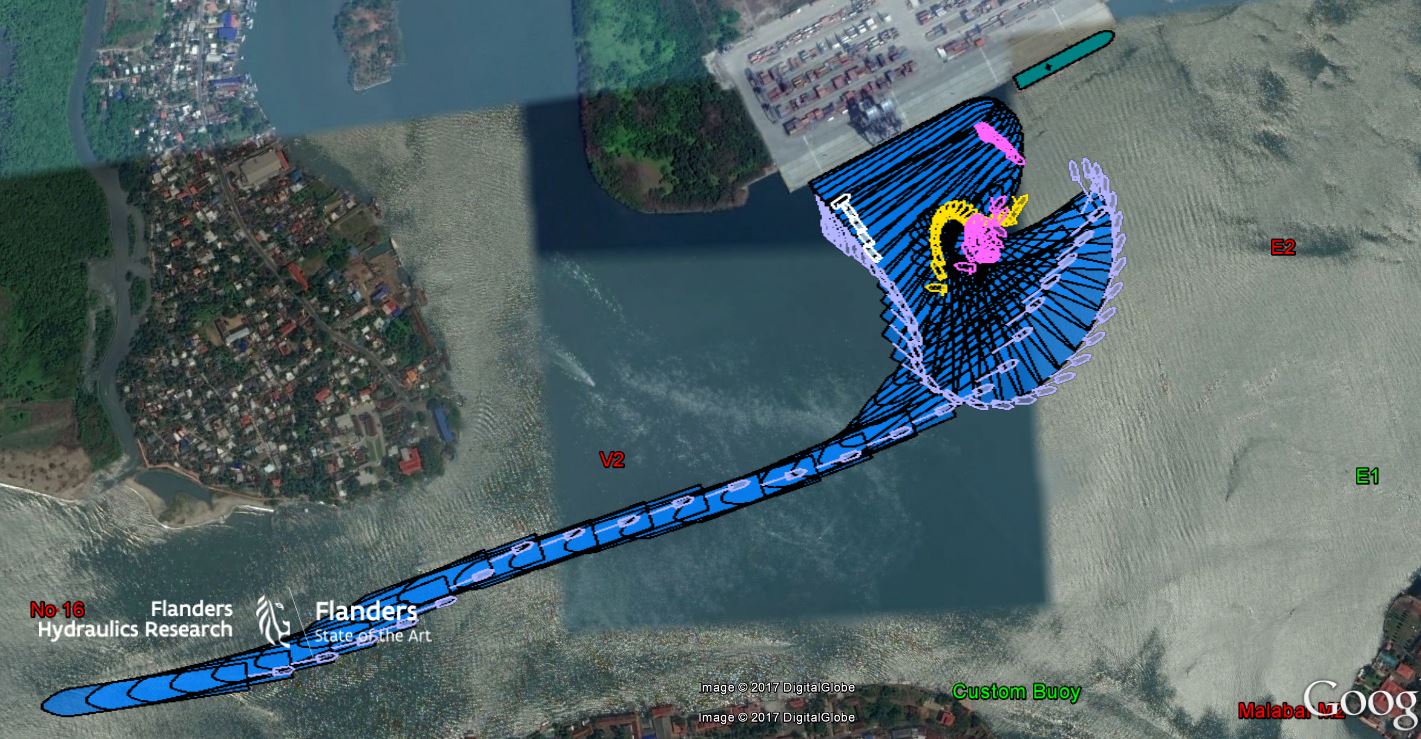Nautical Bottom
Concept
The nautical bottom is defined by PIANC (International Navigation Association) as the level where the physical characteristics reach a critical limit beyond which contact with a ship's keel causes either damage or unacceptable effects on controllability and manoeuvrability.
The concept of the nautical bottom is often applied with mud covered beds. For reasons of survey technology, the density of the mud is used to determine the critical limit. For the Port of Zeebrugge, e.g., the nautical bottom has a density level of 1200 kg/m³. This level is based on experimental research carried out at Flanders Hydraulics Research since 2001.

The results of simulator research should however be checked against reality. This requires, amongst other things, the monitoring of arriving and departing deep-draughted vessels and a follow-up of the evolution of the mud layer characteristics. Enabling the passage of deep-draughted vessels over the mud layers requires an adequate training of the pilots involved. This also applies to larger container ships with a capacity of up to 14000 TEU , which required further research.
In 2008, a new consolidated mathematical model was implemented in the simulators enabling the simulation of a vessel's behaviour above and in contact with any realistic mud layer.
Recent experimental research
Bow thrusters in muddy conditions
Recent experimental research has been carried out to study the behaviour of bow thrusters in muddy conditions. Captive model tests were carried out at scale 1/75 of a 350m long container vessel with a bow thruster of 2500kW and a 400m long container vessel with two thrusters of 1750kW. The tests were carried out for three different underkeel clearances and for three different fluid densities.
These data were then used to adapt the simulator model and to conduct real-time simulations representing manoeuvring in the Port of Zeebrugge. Several manoeuvres were simulated for variable fluid densities, underkeel clearances and wind characteristics. Based on these simulations and on the presumption that two tugboats of 60 ton bollard pull are available, it was concluded that the actual criteria for minimum underkeel clearance can be upheld.
Simulator study for Groningen Seaports, The Netherlands
Another project was a simulator study, ordered by Groningen Seaports and Wiertsema & Partners, to study the implications of the presence of a mud layer in the port of Delfzijl. At present the maximum drafts for shipping traffic to Delfzijl are limited by a minimum under keel clearance with respect to the top of the mud layer.The influence of sailing at very low and even negative under keel clearances with respect to the mud layer on the inbound and outbound route were studied. In addition, the thickness of the mud layer and the mud density were varied systematically. In order to perform the simulations as realistically as possible, local pilots experienced with the port of Delfzijl, participated in the study. During this experimental program several mud layers were tested using paraffins with varying density.
The study revealed the possibility to work with a nautical bottom which is at a lower level than the top of the mud layer. This opens up the possibility for the port of Delfzijl to receive vessels with a larger draft in the future without the requirement of extra dredging efforts.
Simulator study for the Port of Cochin, India

Researchers associated with the Knowledge Centre have worked with Antea Group Belgium on a multiyear project managed with IIC Technologies to assess the siltation processes and to implement a nautical depth in the Port of Cochin (India). The Port of Cochin has the largest siltation rate among the Indian ports, due to two rivers discharging into the port system and the ocean. The Cochin Port Trust wishes to optimize the sediment management efforts by allowing ships to partially penetrate the fluid mud without compromising safety navigation. A research project was therefore set up to understand the siltation processes in detail , by field data acquisition and numerical modelling, and to determine a nautical depth, defined as the minimum water depth that is required for the safe passage of ships through the fluid mud layer.

The project involved several partners (IIC Technologies, Antea Group, Fluves and Stema Systems) and was carried out in different stages. The Knowledge Centre was involved in the fourth and final stage. Based on experiments carried out it in the Towing Tank for Manoeuvres in Shallow Water in different environments characterised by an artificial mud layer thickness, mud viscosity and mud density, mathematical models have been derived for the manoeuvring simulators at Flanders Hydraulics Research. Finally, several manoeuvres for different underkeel clearances were carried out in order to determine a safe nautical depth. The results were presented to the Cochin Port Trust to optimize their dredging strategy.
